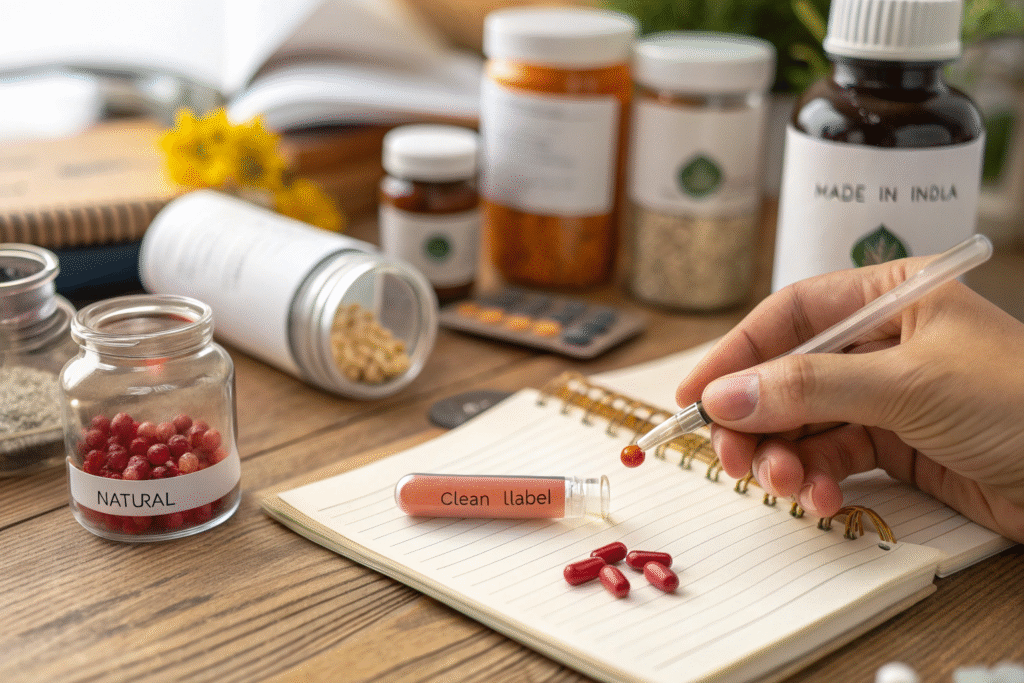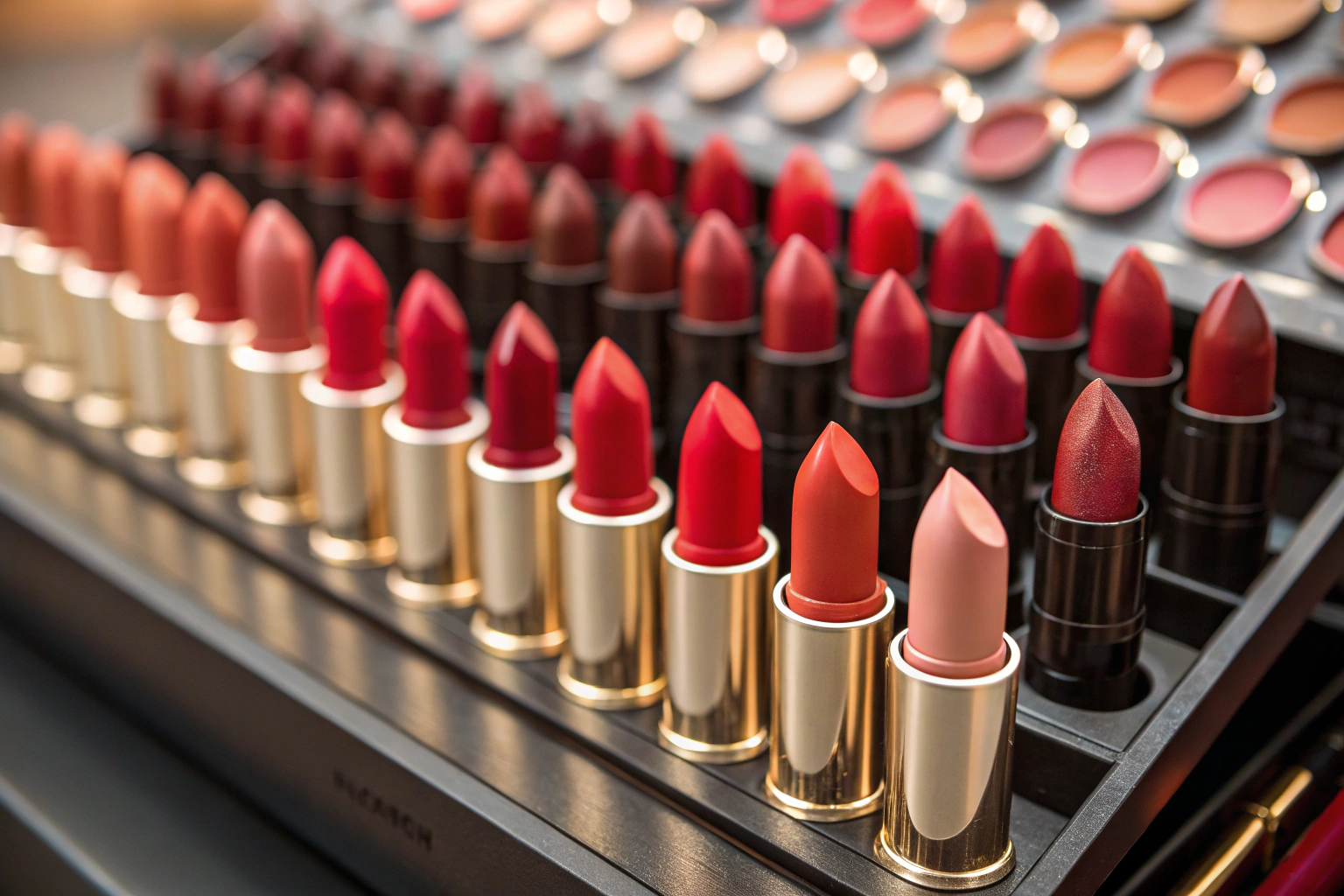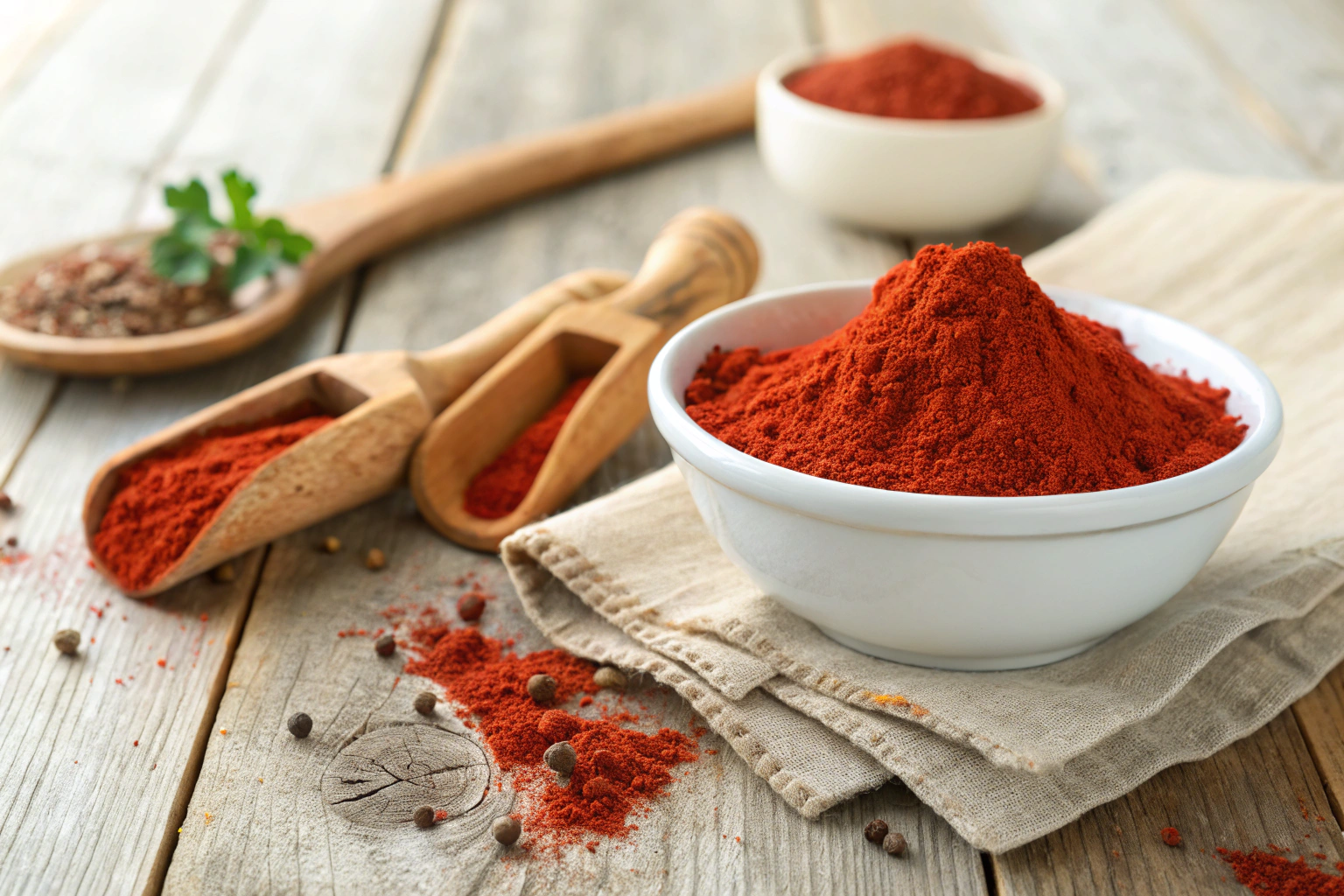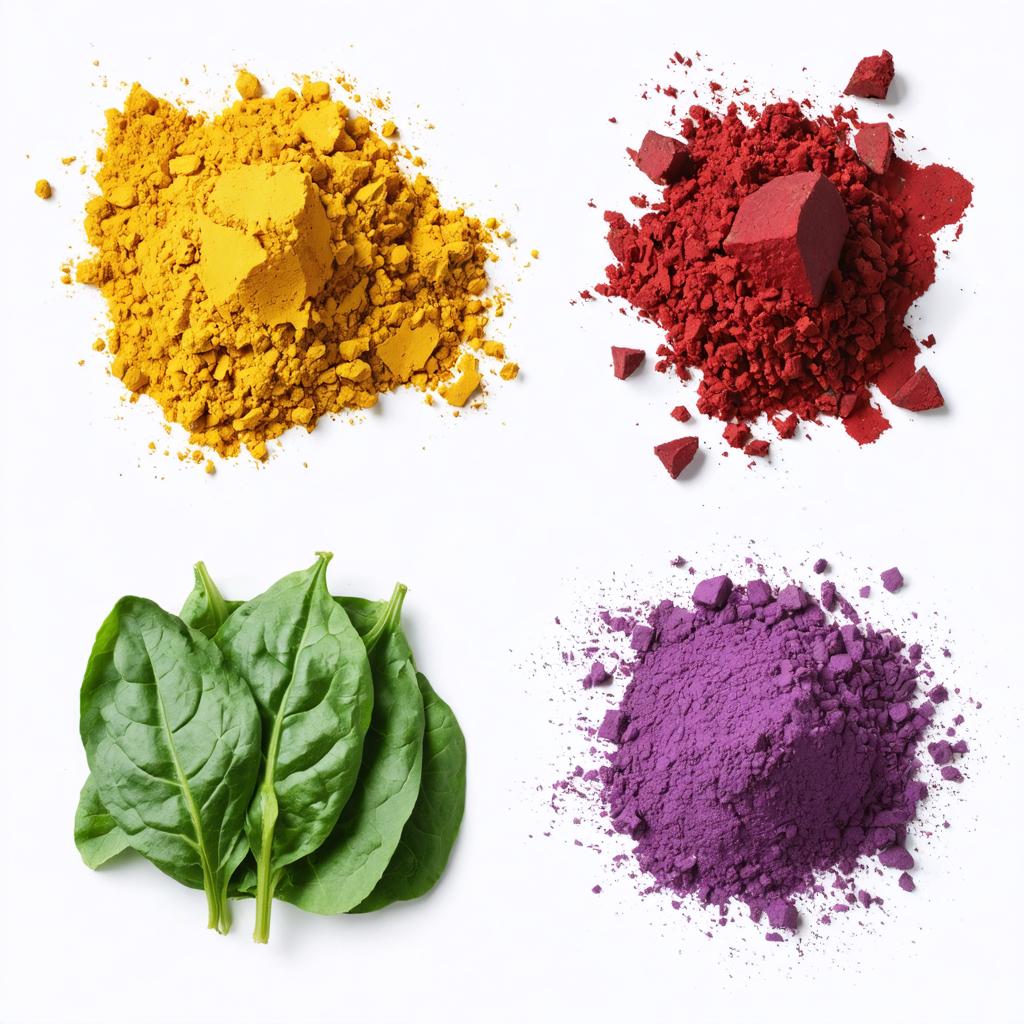I still remember the first time I saw Monascus Red listed in a dietary supplement formula—it felt like discovering a hidden gem that had quietly existed in Asian traditions for centuries.
Monascus Red is a natural colorant and functional ingredient derived from Monascus fermentation, widely used in Indian dietary supplements for its vibrant hue, clean-label benefits, and potential health properties.
If you’re just getting started in India’s booming supplement space and wondering whether Monascus Red is worth considering—this guide is for you.
Table of Contents
ToggleWhat Is Monascus Red, and Why Is It in Supplements?
Let’s start simple: What exactly is this ingredient?
Monascus Red is a red pigment created through the fermentation of rice with Monascus purpureus fungus. It’s used in supplements for its coloring ability, potential cholesterol support, and clean-label appeal.
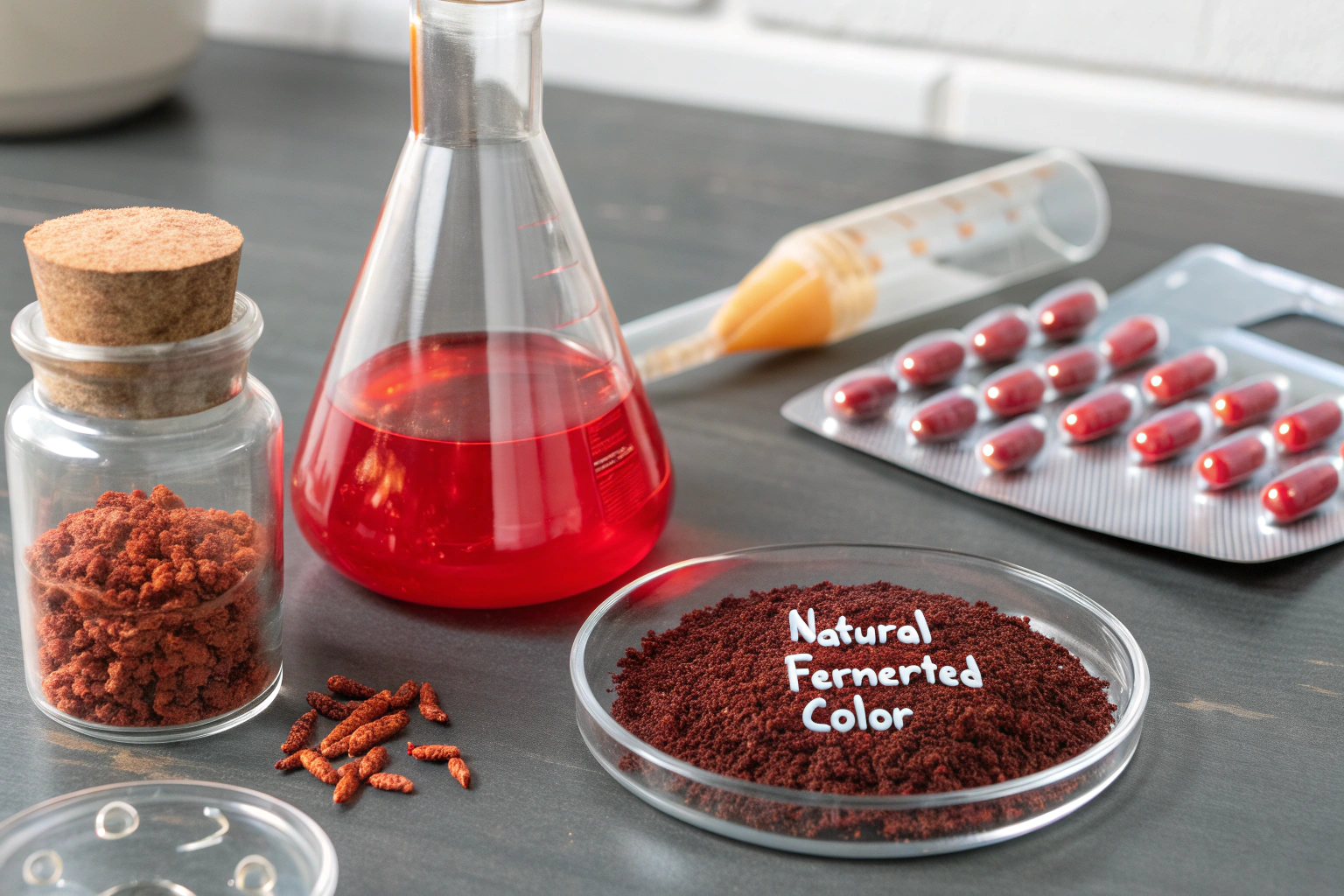
At its core, Monascus Red is what happens when food science meets nature. It’s been used in traditional Asian food products for centuries—think red fermented bean curd, or red rice wine. But now, we’re seeing it appear in capsules, tablets, powders, and even effervescent sachets, especially in India.
So, why the shift? Simple: consumers want natural ingredients that don’t just look good but also contribute to health and wellness. Monascus Red ticks both boxes.
And as a marketer working with manufacturers across India, I’ve seen firsthand how switching from synthetic colorants to Monascus Red improved not only product stability but also market trust.
| Feature | Synthetic Red Dyes | Monascus Red |
|---|---|---|
| Origin | Petrochemical | Natural Fermentation |
| Labeling Appeal | Low | High (Natural, Fermented) |
| Functional Benefits | None | May support lipid metabolism |
| Regulatory Support | Limited | FSSAI & APAC-aligned |
How Is Monascus Red Used in Indian Dietary Supplements?
This is the fun part—because there’s more versatility than you might expect.
In India, Monascus Red is used in tablets, capsules, powders, and gummies, offering a stable, appealing red color without synthetic additives.
I once visited a nutraceutical startup in Bengaluru that was struggling with their beetroot supplement line. The color kept fading on the shelf, and customers were beginning to notice. We swapped in Monascus Red—and not only did the pills look bolder and fresher, but their stability tests improved too.
Whether you’re producing herbal formulations, Ayurvedic blends, or collagen supplements, here’s how Monascus Red fits:
| Supplement Type | Why Use Monascus Red? |
|---|---|
| Capsules | Easy integration in color coating |
| Tablets | Rich hue that doesn’t fade |
| Gummies | Natural appeal for kids and adults |
| Functional Powders | Eye-catching red in fruit or berry blends |
| Ayurvedic Blends | Aligns with fermented heritage |
Its oil-dispersible and water-soluble forms1 give you freedom across different applications. And yes, we’ve helped brands customize particle sizes and hues depending on the dosage form and processing temperature.
Is Monascus Red Safe for Indian Health Product Use?
This is often the first concern I hear from formulators—and rightly so.
Yes, Monascus Red is safe for use in Indian dietary supplements when produced under strict conditions and within regulatory dosage guidelines set by FSSAI and other global standards.
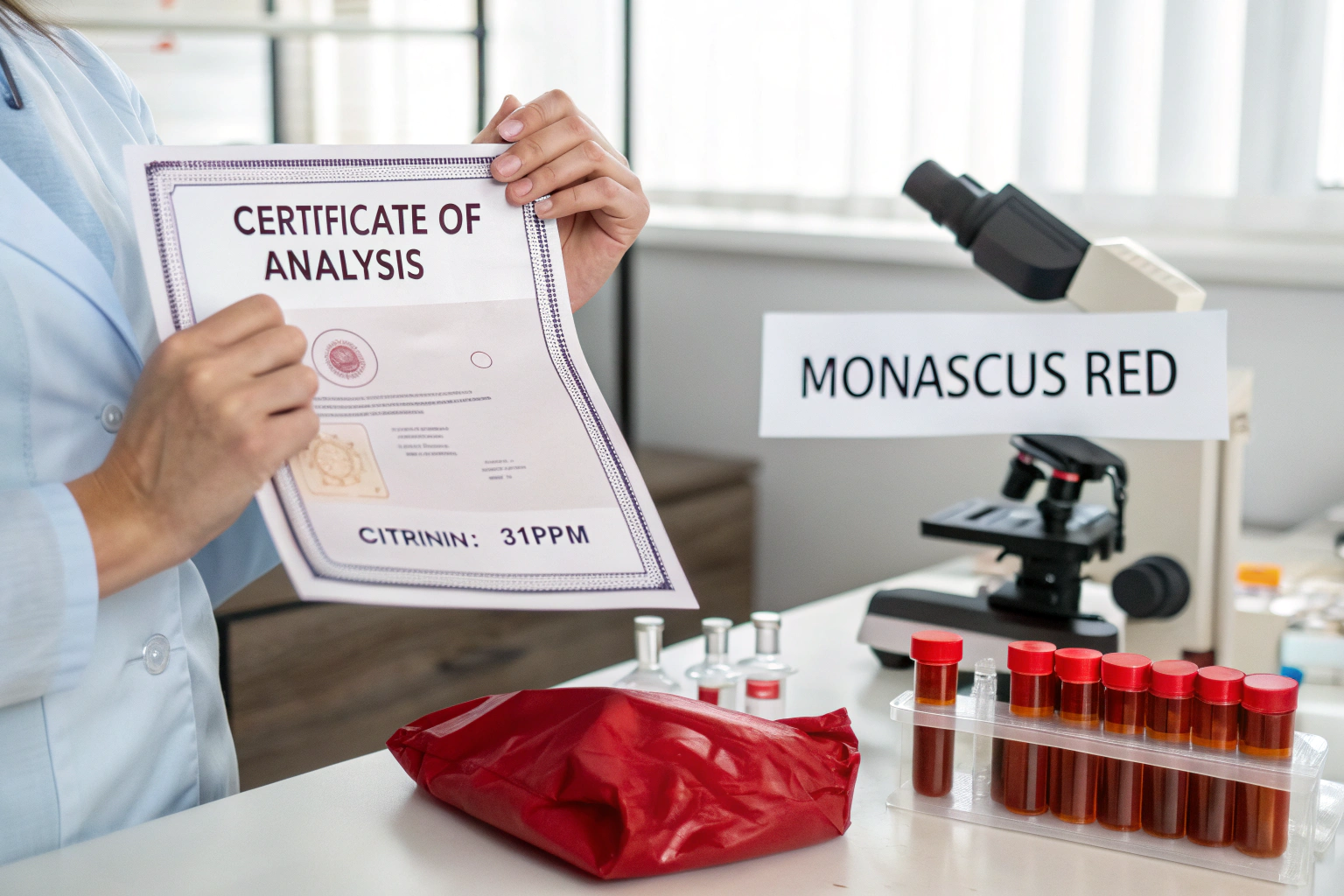
Let’s break this down a bit.
The main issue people worry about is monacolin K2, a statin-like compound that occurs naturally during fermentation. It’s the same compound responsible for cholesterol-lowering effects in red yeast rice. However, in colorant-grade Monascus Red, monacolin K is either completely absent or strictly controlled.
At Santa Color, we work with low-residue or monacolin-free Monascus Red designed specifically for coloring—not therapeutic effects.
We provide COAs, SDS, and third-party test results (e.g., from Eurofins or SGS) that show compliance with:
- FSSAI natural color regulations
- EU purity and heavy metal standards
- US supplement labeling transparency rules
| Risk Category | Mitigation in Santa Color Monascus Red |
|---|---|
| Monacolin K | Non-detectable or < 0.1% |
| Citrinin (Mycotoxin) | Strict batch testing, <1 ppm |
| Heavy Metals | Below EU/India thresholds |
| Microbial Load | Heat-sterilized, tested per batch |
So yes—Monascus Red is safe for Indian supplement producers, as long as you’re sourcing from a compliant supplier with rigorous testing and documentation.
How Does Monascus Red Affect the Final Product?
Here’s where the magic happens—not just visually, but emotionally too.
Monascus Red enhances product aesthetics, boosts consumer perception of naturalness, and maintains its color integrity during shelf life, making supplements look vibrant and trustworthy.
I always say this: the color of a product is the first thing people judge.
Whether your supplement is in a transparent capsule or pressed into a shiny tablet, that red hue needs to scream: “This is fresh, this is premium, this is healthy.”
What I love about Monascus Red is how stable it is—resisting oxidation, moisture, and even some heat. That means your product looks just as good on Day 180 as it did on Day 1.
I had a client in Kerala producing spirulina+berry chewables for kids. After switching to Monascus Red, they added a “naturally colored with fermented rice extract” note on the label—and parents responded positively. Their reorder rate increased by 22%.
What Should Indian Supplement Brands Know Before Using It?
You don’t want surprises—especially not regulatory ones or production setbacks.
Indian supplement brands should choose high-purity Monascus Red with batch-level test reports, select the right format for their production line, and confirm regulatory compatibility with their export markets.
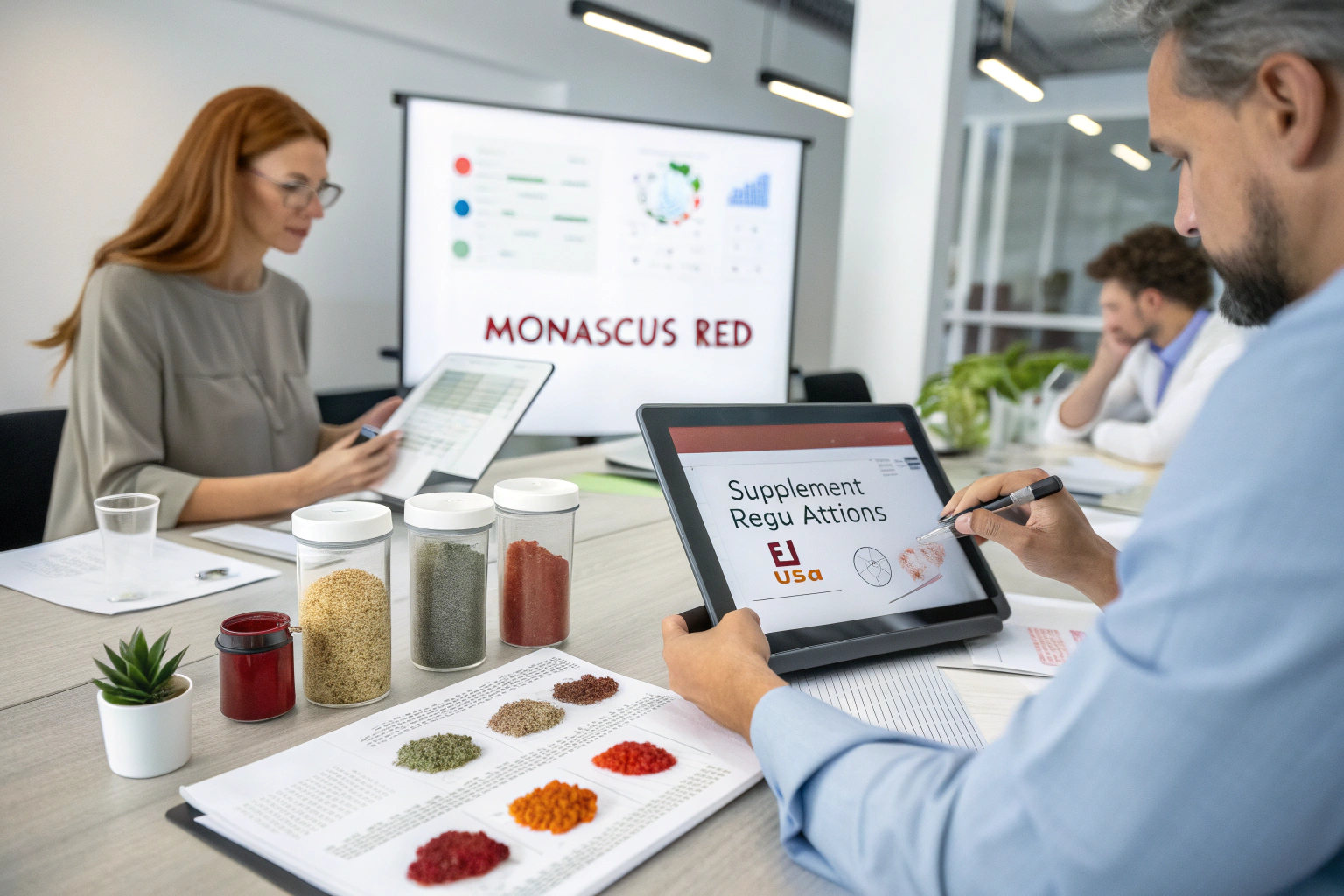
Here’s a checklist I often share with first-time users:
- ✅ Is the product free from monacolin K?
- ✅ Is it tested for citrinin and heavy metals?
- ✅ Do you need it in powdered, granule, or water-soluble form?
- ✅ Are you using it for domestic only or also exports?
- ✅ Have you reviewed labeling requirements in your destination country?
At Santa Color, we help brands figure out all of the above. And we’re always happy to provide free samples, trial usage rates, and formulation advice. You can find more details here:
👉 Explore Santa Color’s Monascus Red for Supplements
We’ve worked with capsule producers, gummy startups, Ayurvedic companies, and big nutraceutical players. Whether you’re crafting your first red supplement or upgrading your colorant portfolio—there’s a Monascus Red format for you.
| Available Format | Best For | Shelf Life |
|---|---|---|
| Powdered | Tablets, dry blends | 24 months |
| Water-soluble | Sachets, beverages | 18 months |
| Oil-dispersible | Emulsions, gummies | 18 months |
| Granule (microbead) | Controlled-release capsules | 24 months |
Is Monascus Red Suitable for Export Supplements?
If you’re building for global markets, this part is crucial.
Monascus Red is suitable for exports when documentation includes heavy metal, microbial, and mycotoxin compliance, along with clean-label appeal and compatibility with destination country laws.
We’ve supported Indian brands exporting Monascus Red-based products to the Middle East, Southeast Asia, and even Europe.
While regulations vary, here’s a simplified overview:
| Country / Region | Monascus Red Status | Notes |
|---|---|---|
| India | Approved for use | Under FSSAI for natural colorants |
| China | Approved | Common in functional food supplements |
| Southeast Asia | Widely accepted | Labeling rules apply |
| USA | Dietary supplements only | DSHEA compliant, not allowed in food |
| EU | Limited food use | Supplements: depends on country-specific laws |
If you’re aiming for export-ready formulations, we’ll help you get there. From COAs to declaration forms to regulatory checklists—we’ve got your back.
Conclusion
Monascus Red is more than just a color—it’s a strategic ingredient for Indian supplement brands looking to stay clean, compliant, and consumer-loved.

